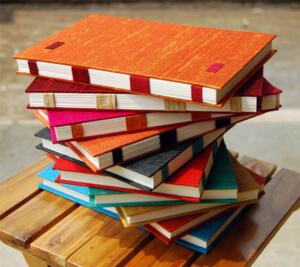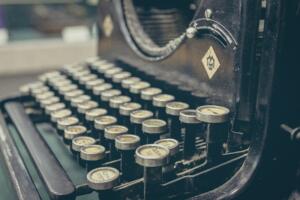Memories of factory tours from school was a shared experiences which led us to start Inky Memo. We were talking about the fascination of watching capped soft-drink bottles and other everyday products rolling down a conveyor belt during those childhood factory visits, when we wondered out loud how great it would be to see our stationery being manufactured in a similar mechanical ballet. The idea of exploring deeper into the stories of stationery was born.
We’re lucky to have several popular stationery brands who are kind enough to share that process and their industrial techniques with us, either as images, videos and documentaries. Some go as far as to allow guided tours of their facilities. School children do seem to get the prioprity access in many places, but some popular stationery brand factories are open to a wider audience too.
Here are some of our favourite factory tours that explore the processes and methods of popular stationery manufacturers.
Table of Contents
1. Crayola
Crayola LLC, based in Easton, Pennsylvania, and a subsidiary of Hallmark Cards, Incorporated, is the world’s top maker of creative expression products for children. The Crayola brand, best known for the iconic Crayola Crayon, was founded in 1903 by cousins Edwin Binney and C. Harold Smith and has since grown into a portfolio of creative art tools, crafting activities, and creativity toys.
In addition to its corporate headquarters in Lehigh Valley, Pennsylvania, Crayola has production sites in Forks Township and Bethlehem (Pennsylvania), Lindsay (Ontario), and Mexico City, (Mexico). Although the company no longer offers tours of its manufacturing facilities due to child safety concerns, the brand has ‘Crayola Experience’ centers across 5 locations in USA. Families can enjoy dozens of colorful and creative activities at these centers and also watch Crayola workers (“Crayonologists”) pour buckets of melted wax into molds in a child-safe manner behind plexiglass shields to make smoking-hot Crayola crayons.
For more information about the Crayola Experience Centers check this link; https://www.crayolaexperience.com/
Check this video for a virtual tour of the vibrant Crayola production factory in Easton, Pennsylvania.
2. Staedtler
Johann Sebastian Staedtler founded the Staedtler brand in 1835 as a pencil factory in Nuremberg, Germany, although the company’s roots can be traced back to 1662, when references to Friedrich Staedtler as a pencil-making craftsman were found in the city municipal records. Johann Staedtler displayed his products at the Exhibition of the Industry of All Nations in New York in 1853, and just a few years later, the high-quality, German-made stationery brand earned a credible reputation for itself in France, the United Kingdom, Italy, Russia, America, and the Middle East. Today, Staedtler claims to be Europe’s largest manufacturer of wood-cased pencils, OHP pens, mechanical pencils, leads, erasers, and modelling clays.
Staedtler has more than 26 global subsidiaries and 9 manufacturing plants worldwide. Almost two-thirds of the company’s manufacturing takes place in the 4 production plants in the Nuremberg Metropolitan Region, Germany, while some of its products are manufactured in Japan. The group has more than 3,000 employees across the world, and Staedtler products are available in 150 countries.
While it may appear to be just a slat of wood with a combination of graphite and clay within, the process of creating a pencil is extremely intensive! Watch this video to see the pencil-making facility in action.
3. Faber-Castell
Faber-Castell was founded in 1761 in Stein (Germany) as A.W. Faber by cabinetmaker Kaspar Faber. After the marriage of Lothar Von Faber’s granddaughter and heiress with a count of Castell in 1900, the A.W. Faber business acquired the name Faber-Castell with a new logo, combining the Faber motto with the “jousting knights” of the Castells’ coat-of-arms. Faber-Castell is one of the world’s oldest manufacturing businesses and has been owned by the same entrepreneurial noble family for nine generations. The company, headquartered in Stein near Nuremberg is one of the largest producers of pens, pencils, office supplies and art supplies, as well as high-end writing instruments and luxury leather goods. Faber-Castell employs approximately 8,000 people globally and is present in over 120 countries, with 16 production sites across 10 countries and 22 sales organizations.
Faber-Castell provides a variety of guided tours at its headquarters in Stein including a one-of-a-kind ensemble of factory buildings, mansions and parkland designed by Lothar von Faber and Alexander Count von Faber-Castell. Its unique allure stems from the contrast of the past and future of a family business that has grown to become a worldwide player. Visitors may visit the beautiful medieval ‘Faber-Castell Castle,’ with its Roman-styled arches and columns, and view an exhibition on the family and company’s history spanning more than 250 years of Faber-Castell. Other options include the ‘Old Lead Museum’ where the process of lead mining in the 19th and 20th centuries is brought to life and a guided tour of the ‘Modern pencil-production factory’ where visitors can take a look behind the scenes of the “wood-cased pencil” manufacturing right from the raw pencil production, stamping, dip coating to sharpening.
For more information on booking the Faber-Castell Factory Tour check this link; https://www.faber-castell.in/corporate/faber-castell-experience
Take a look behind the scenes in this video to see how Faber-Castell manufactures its popular highlighters from recycled plastics.
4. Lamy
LAMY is a designer and manufacturer of writing instruments (fountain pens, ballpoint pens, ink and ink erasers) based in Heidelberg, Germany. The firm was created by C. Joseph Lamy (a former sales agent for Parker Pen, Germany), who began developing pens in the 1930s, but it truly took off in 1966 when his son, Dr. Manfred Lamy, began designing pens inspired by the Bauhaus style. Dr. Manfred Lamy’s innovative Lamy 2000, launched in 1966, set new standards in design and workmanship by emphasizing practical utility and clear design language which forms the basis for all Lamy writing instruments.
LAMY has evolved to become one of the world’s leading pen brands since its debut in 1930. Customers like their pens for the comfort, affordability, and functionality, while award organizations have bestowed several honors on them for their striking designs. In 2016, Lamy built its first German flagship shop in Heidelberg to celebrate ’50 years of Lamy Design, ‘ followed by additional stores including one in New York in May 2018. Today, Lamy is represented in over 80 countries with more than 15,600 retail customers and over 200 Lamy boutiques across the globe.
Lamy’s headquarters and production facilities in Heidelberg, Germany, span 170,000 square feet and with an employee strength of over 500. The headquarters include distinct features such as the LAMYteria company lunchroom, the Galleria, and the sculpture garden that symbolizes and expresses the Lamy culture in a physical environment.
Enjoy this in-depth video which shows how the LAMY Pens are manufactured in the factory.
5. Gamblin Artists Colors
Gamblin Artists Colors founded by artist Robert Gamblin in his single-car garage in Portland in 1980 is one of the world’s finest artist paint brands, as well as the only independent American company entirely dedicated to oil painting supplies. Gamblin Artist’s Oil Colors are created with pure pigments and the highest quality refined linseed oil. Because the colours do not include any adulterants or additions each colour keeps its own unique qualities such as tinting intensity, undertone, and texture. Gamblin Artists Colors are used by some of today’s best artists, including Wolf Kahn, Chuck Close, David Knapp, Emily Mason, and Kevin MacPherson. A different vertical, Gamblin Conservation Colors, makes paints that are commonly used in institutions like the J. Paul Getty Museum and the National Gallery to restore works by Van Eyck, da Vinci, and Van Gogh.
Gamblin produces over 200 colours in an environmentally sustainable and safe production process. All Gamblin Artists Colors paints including the Gamsol solvent (an odorless solvent) are lead-free and non-toxic. Based in Portland, Oregon, the Gamblin Artist Colors factory has a workforce of over 20 employees and staff members including artists. The process involves fusing and combining natural oils with pigments and placing it onto a three-roll wheel which processes it into the correct viscosity and hue. Workers then scrape off the paint using paddles, creating a pile of colour that is ready to be packed.
Robert Gamblin spends around half of his workweek on the conservation colours side of the business, while the other half is spent in the studio, usually with his wife, Catherine Gamblin, who is also a painter and his business partner. While they are no longer active in the day-to-day operations of the company, the couple continue to invest in R&D as well as sales and marketing.
This video will definitely encourage you to take up your art supplies and start creating!
The stationery we love is apparently simple. A pencil is just a rod of graphite encased in wood. But the process of creating that object from the raw materials in the thousands is an infinitely complex orchestra of a thousand moving parts. We’re still those wide-eyed kids staring at the magic happen as craftsmen and machines come together to create these ubiquitous tools from such basic ingredients.
Sharing how stationery is made and how it came to be is our favourite things, after stationery itself. For more of this, please sign up for our newsletter. We’d love to show you more.
All images & videos are shown here in a fair use context. The videos are © by the original video maker or manufacturer.


